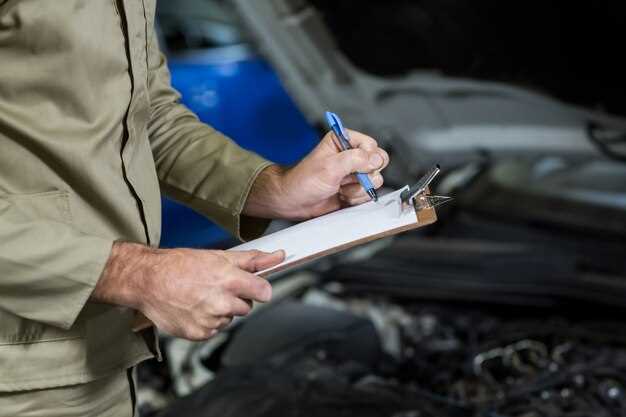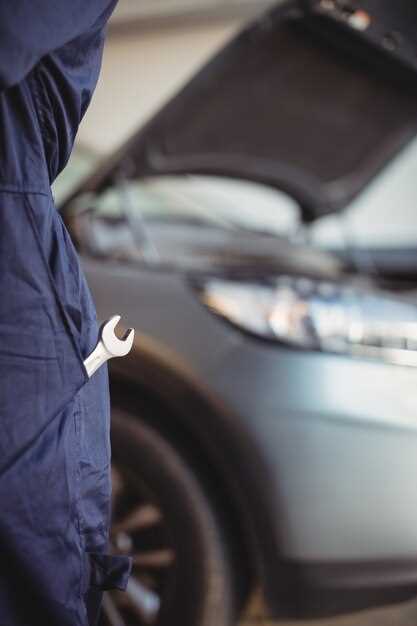
Maintaining your vehicle is essential for ensuring its longevity and optimal performance. Regular car maintenance not only helps you avoid surprise breakdowns but also enhances safety on the road. To keep your car in peak condition, it is vital to develop a systematic approach to maintenance that encompasses various aspects, from routine checks to seasonal preparations.
In this article, we will explore essential car maintenance tips that every driver should include in their checklist. Whether you are a seasoned driver or a new owner, understanding these basics can save you time and money in the long run. From checking fluid levels to inspecting tires, each task plays a crucial role in the overall health of your vehicle.
Furthermore, we will highlight the importance of adhering to manufacturer guidelines and schedules, as they provide invaluable insights tailored to your specific make and model. By following these tips, you can ensure that your car remains reliable and efficient, allowing you to enjoy a safer and more comfortable driving experience.
How to Check and Maintain Tire Pressure Regularly

Maintaining proper tire pressure is crucial for optimal vehicle performance, safety, and fuel efficiency. To check your tire pressure, follow these steps:
1. Purchase a Tire Pressure Gauge: Invest in a reliable tire pressure gauge, which can be either digital or analog. This tool will help you accurately measure the air pressure in your tires.
2. Know the Recommended Pressure: Check the vehicle’s owner manual or the sticker located on the driver’s side door jamb to find the manufacturer’s recommended tire pressure, typically measured in pounds per square inch (PSI).
3. Check Tire Pressure When Cold: For accurate readings, check the tire pressure when the tires are cold, ideally in the morning or after the vehicle has been parked for at least three hours. Driving heats up the tires and can give a falsely high reading.
4. Remove the Valve Cap: Unscrew the valve cap from the tire you want to check and set it aside in a safe place to avoid losing it.
5. Measure the Pressure: Press the tire pressure gauge firmly onto the valve stem. You should hear a brief hissing sound as air escapes; this is normal. Read the gauge immediately for the pressure reading.
6. Compare with Recommended Pressure: Compare the reading with the recommended PSI. If the pressure is too low, add air. If it’s too high, release some air until you reach the correct level.
7. Inflate or Deflate as Needed: To inflate the tire, use an air compressor at a gas station or home. For deflation, press the small metal stem inside the valve with a tool or your fingernail to release air until the desired pressure is reached.
8. Repeat for All Tires: Perform this process for all four tires, including the spare tire if your vehicle has one. It’s important to maintain consistent pressure across all tires for balanced handling and performance.
9. Check Regularly: Make it a habit to check your tire pressure at least once a month and before long trips. Regular checks can help prevent uneven tire wear, improve fuel efficiency, and enhance safety on the road.
10. Monitor Temperature Changes: Tire pressure can fluctuate with changes in temperature. For every 10-degree Fahrenheit drop in temperature, tire pressure can decrease by about 1 PSI. Adjust accordingly during seasonal changes.
Consistent monitoring and maintenance of tire pressure contribute significantly to vehicle longevity and your safety while driving.
Identifying Signs of Brake Wear and When to Replace Them
Maintaining your vehicle’s brakes is crucial for safety and performance. Regularly checking for signs of brake wear can prevent costly repairs and ensure your vehicle operates efficiently. Here are key indicators that your brakes may need attention.
One of the most noticeable signs of brake wear is a squeaking or squealing noise when braking. This sound typically comes from a wear indicator designed to alert drivers that brake pads are thinning. If you hear this noise, it’s essential to have your brakes inspected promptly.
Another clear sign of brake wear is a grinding sound that occurs when you press the brake pedal. This noise indicates the brake pads have worn down completely, and metal is making contact with the brake rotor. Ignoring this problem can lead to severe damage and costly repairs.
Vibration or pulsation in the brake pedal while applying the brakes can also signal trouble. This sensation often results from warped brake rotors due to excessive heat or uneven wear. If you experience this, it’s advisable to have your rotors checked and potentially resurfaced or replaced.
Poor braking performance, such as increased stopping distances or a soft brake pedal feel, can indicate worn brake pads or low fluid levels. If your brakes do not respond as expected, it’s crucial to address the issue right away to ensure safety on the road.
Inspecting your brake fluid level regularly is also important. Low brake fluid may indicate a leak in the braking system, while dirty fluid can compromise performance. Clear or light-colored fluid is ideal; dark or murky fluid should be replaced.
Finally, checking the condition of your brake pads visually can provide insight into their wear. Most pads have a wear indicator groove that becomes less visible as the pad wears down. If the pad material is less than a quarter of an inch thick, it’s time to replace it.
In summary, recognizing the signs of brake wear–such as noise, vibration, poor performance, and fluid conditions–will help ensure your vehicle’s braking system remains effective. Regular maintenance and timely replacements can enhance safety and prolong the lifespan of your braking components.
The Importance of Regular Oil Changes and How to Do It Yourself

Regular oil changes are crucial for maintaining the health and performance of your vehicle. Engine oil lubricates the moving parts of your engine, reduces friction, and helps to prevent overheating. Over time, oil breaks down and becomes contaminated with dirt, debris, and combustion byproducts, which can lead to engine wear and reduced efficiency.
Changing your oil at recommended intervals is essential for prolonging the life of your engine. Neglecting this maintenance task can result in serious issues, including increased fuel consumption, decreased performance, and ultimately, costly repairs.
Performing your own oil change can be a straightforward process, saving you both time and money. Here’s how to do it:
First, gather the necessary tools and materials: a wrench, an oil filter wrench, a funnel, an oil catch pan, and the appropriate type and amount of engine oil. Make sure to also have a new oil filter on hand.
Begin by warming up your engine for a few minutes. This helps the oil flow more freely. After warming, turn off the engine and allow it to cool slightly. Then, locate the oil drain plug underneath the vehicle. Place the oil catch pan under the drain plug, remove the plug with a wrench, and let the old oil drain completely.
Next, remove the old oil filter using the oil filter wrench. Make sure to lubricate the rubber gasket on the new oil filter with a bit of fresh oil before installing it. This ensures a proper seal. Install the new filter by hand, being careful not to overtighten it.
Once you have drained the old oil and replaced the filter, reattach the drain plug securely. Use a funnel to pour the new oil into the engine through the oil filler cap. Check your owner’s manual for the correct oil type and capacity. After adding the oil, wait a moment, then use the dipstick to check the oil level and add more if necessary.
Finally, start your engine and let it run for a minute. Check for any leaks around the oil filter and drain plug. After ensuring everything is tight and there are no leaks, turn off the engine. Dispose of the old oil and filter properly by taking them to a recycling center.
Conducting regular oil changes yourself not only protects your engine but also gives you a sense of accomplishment. Set a reminder on your calendar to ensure you stay on track with your maintenance schedule.





